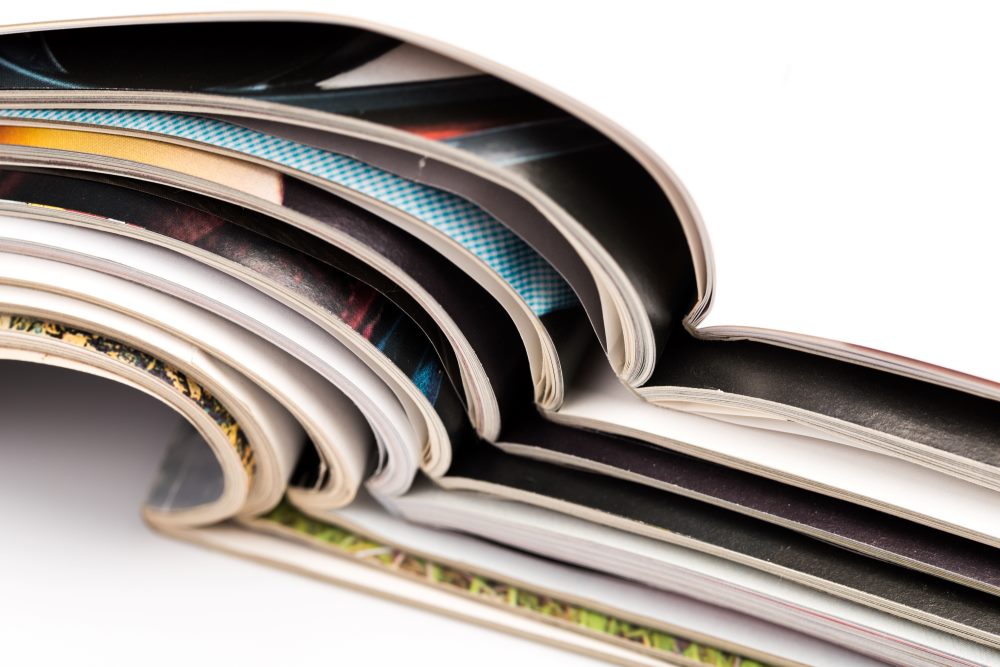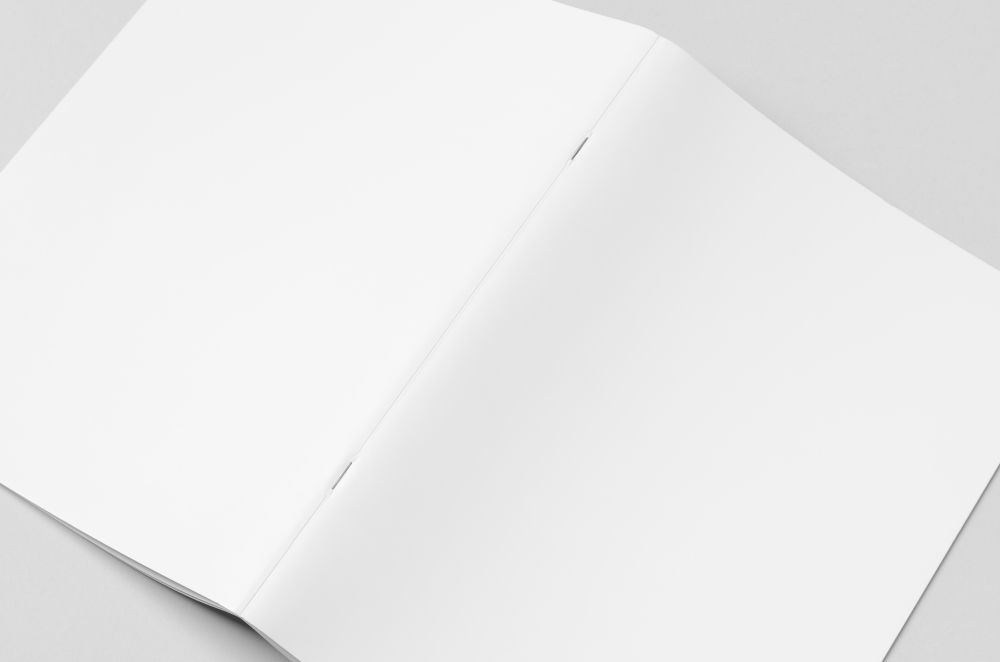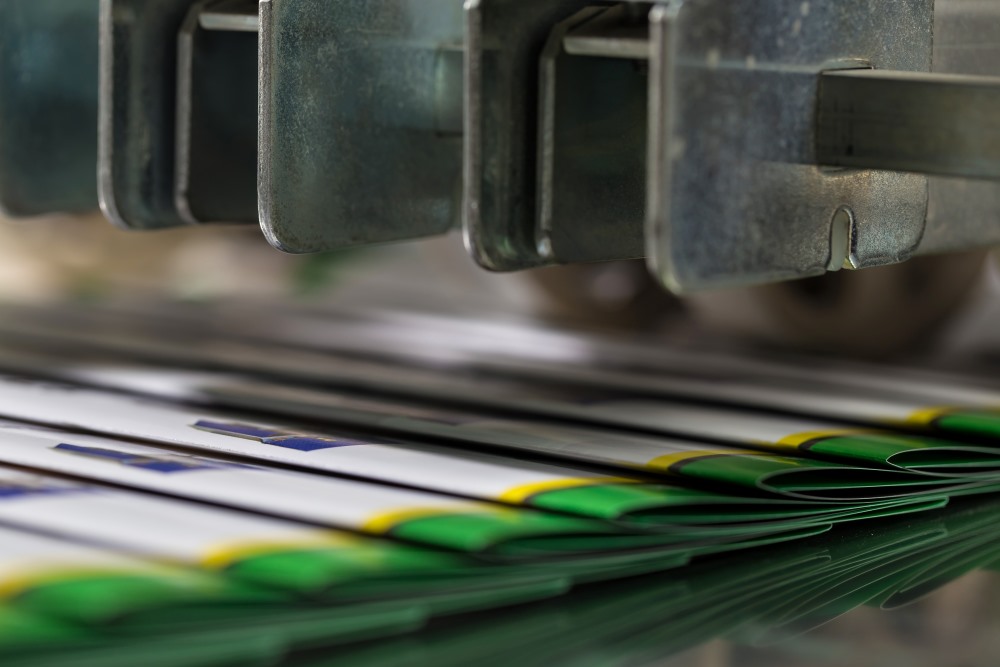

In the realm of communications and marketing, creating a magazine to connect with your audience is a powerful strategy. Magazines serve as a tangible representation of your brand, offering a unique platform to showcase content, stories, and updates. However, one crucial decision that often perplexes magazine creators is choosing the right binding method. In this blog post, we’ll explore two popular options: perfect bound and saddle stitch, helping you make an informed decision that aligns with your company or association’s goals.
Perfect Bound Magazines: The Elegance of Seamless Binding
Perfect binding is a sophisticated and professional method that lends a polished look to your magazine. This binding technique is characterized by a square, flat spine, providing a seamless appearance that exudes quality and durability. Here are some key features of perfect bound magazines:
Professional Aesthetics
Perfect bound magazines offer a sleek and modern appearance, making them ideal for B2B companies aiming to convey a professional image or any publication where aesthetics are a priority. The flat spine allows for easy visibility on bookshelves and enhances the overall visual appeal.
Versatility in Page Count
Perfect binding accommodates a wide range of page counts, whether your magazine is a concise publication or a comprehensive industry guide. Perfect binding is generally the preferred option for larger magazines, as it allows for a higher page count than saddle stitch. “Perfect binding is an option for smaller magazines as well,” said Matt Thompson, Bindery Manager at Walsworth – Fulton. “We can use perfect binding on magazines as small as 2mm thick on the low end, up to 80mm on the high end.”
Easier Browsing and Organization
Another advantage of perfect binding is the option to print on the binding itself. Unlike saddle stitching, where you can only print on the front and back covers, perfect binding lets you print text on the narrow edge of the cover. This means you can stack magazines or place them on a shelf while easily identifying the publication and issue.
Enhanced Durability
Perfect bound magazines tend to be a more durable option than saddle stitching. If you want your publication to be referenced for years to come, it may be worth investing in perfect binding – repeated use of a saddle stitched magazine may cause the staples in the spine to come undone, resulting in the magazine falling apart. “The glue that holds the magazine together, whether it’s hot melt or PUR, allows longer life of the magazine,” said Thompson.
Saddle Stitch Magazines: The Economical and Efficient Choice

On the other hand, saddle stitching is a cost-effective and practical binding method that suits magazines with a specific set of requirements. You can identify saddle stitching by the distinctive staples or stitches on the spine that hold the magazine’s pages together. Here are the benefits of saddle stitch magazines:
Cost-Effective Solution
Saddle stitching is generally more budget-friendly than perfect binding. This makes it an attractive option for companies looking to minimize production costs while still delivering a visually appealing magazine.
Easier To Read and Reference
Another benefit of saddle stitching is the ability for your printed magazine to lay flat when reading. The design of the cover and binding allows a saddle stitched magazine to stay open on a flat surface, while a perfect bound magazine will tend to force itself closed (especially when it’s brand new and the spine hasn’t been broken in).
Choosing the Right Binding for Your Magazine

Now that we’ve explored the key characteristics of both perfect bound and saddle stitch magazines, how do you decide which binding method is best suited for your company or association? Consider the following factors:
Content and Page Count
Assess the nature of your content and the overall page count of your magazine. If you have a substantial amount of content with high-quality visuals, perfect binding might be the ideal choice. For shorter publications or newsletters, saddle stitching offers efficiency without compromising quality.
Budget Constraints
Evaluate your budget for magazine production. While offering a premium look, perfect binding often has higher costs associated with it. If cost-effectiveness is a priority, saddle stitching provides an economical solution without sacrificing visual appeal.
Distribution Channels
Consider how and where your magazine will be distributed. If you frequently attend events or trade shows and need a portable and lightweight option, saddle stitch magazines are more convenient. Perfect bound magazines, with their professional appearance, may be better suited for display in offices or waiting areas, especially if they will be part of a collection.
Talk to the Magazine Experts at Walsworth
When creating your magazine, the choice between perfect bound and saddle stitch magazines ultimately depends on your specific goals, content and budget. Both binding methods offer distinct advantages, and understanding the unique features of each will empower you to make an informed decision. Whether you opt for the seamless elegance of perfect binding or the cost-effective efficiency of saddle stitching, your magazine can become a powerful tool for engaging your audience and reinforcing your brand presence.
With over 87 years of experience in the printing industry, Walsworth has the knowledge, experience and capabilities to help you create the best magazine possible. Whether you’re starting from scratch, switching to a new printer or even transitioning your editorial team, our seasoned printing experts are here to walk you through each step of the process. To learn more about magazine printing solutions with Walsworth, contact us today!
